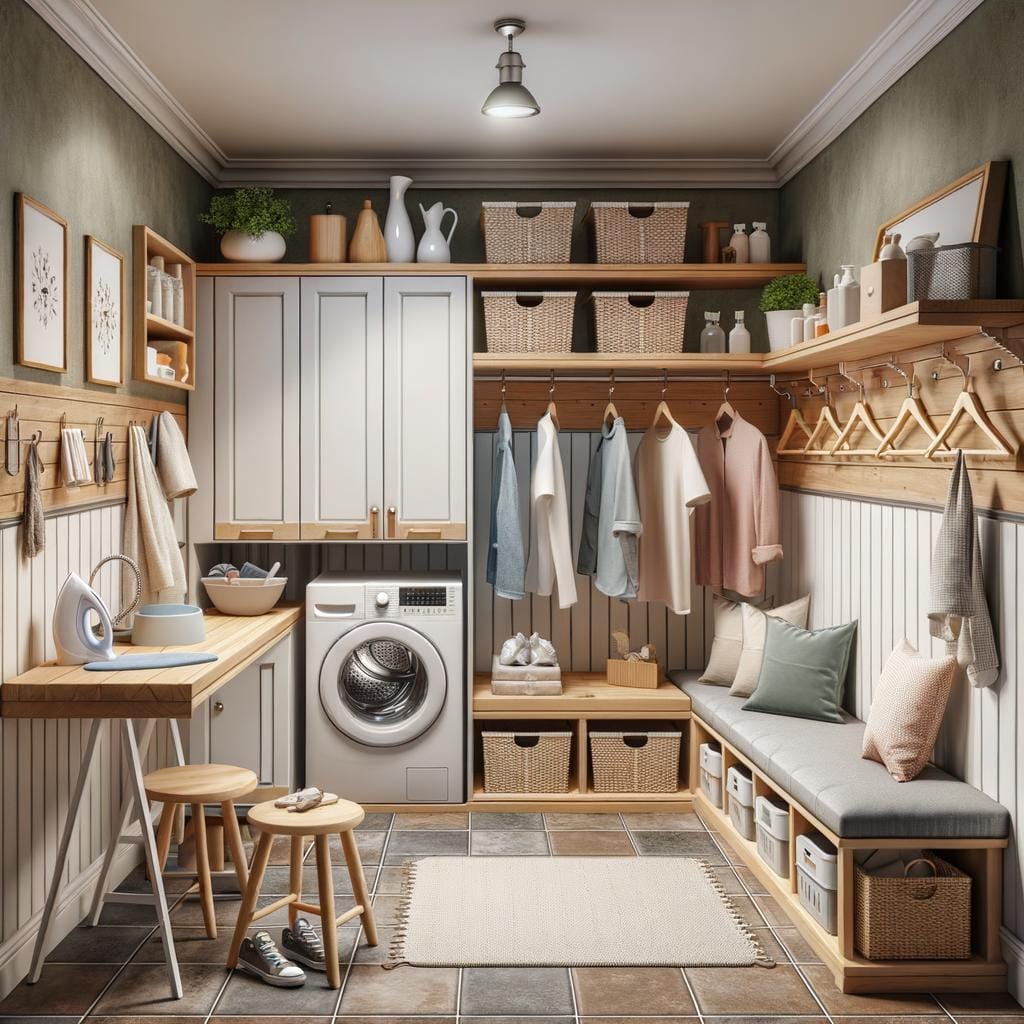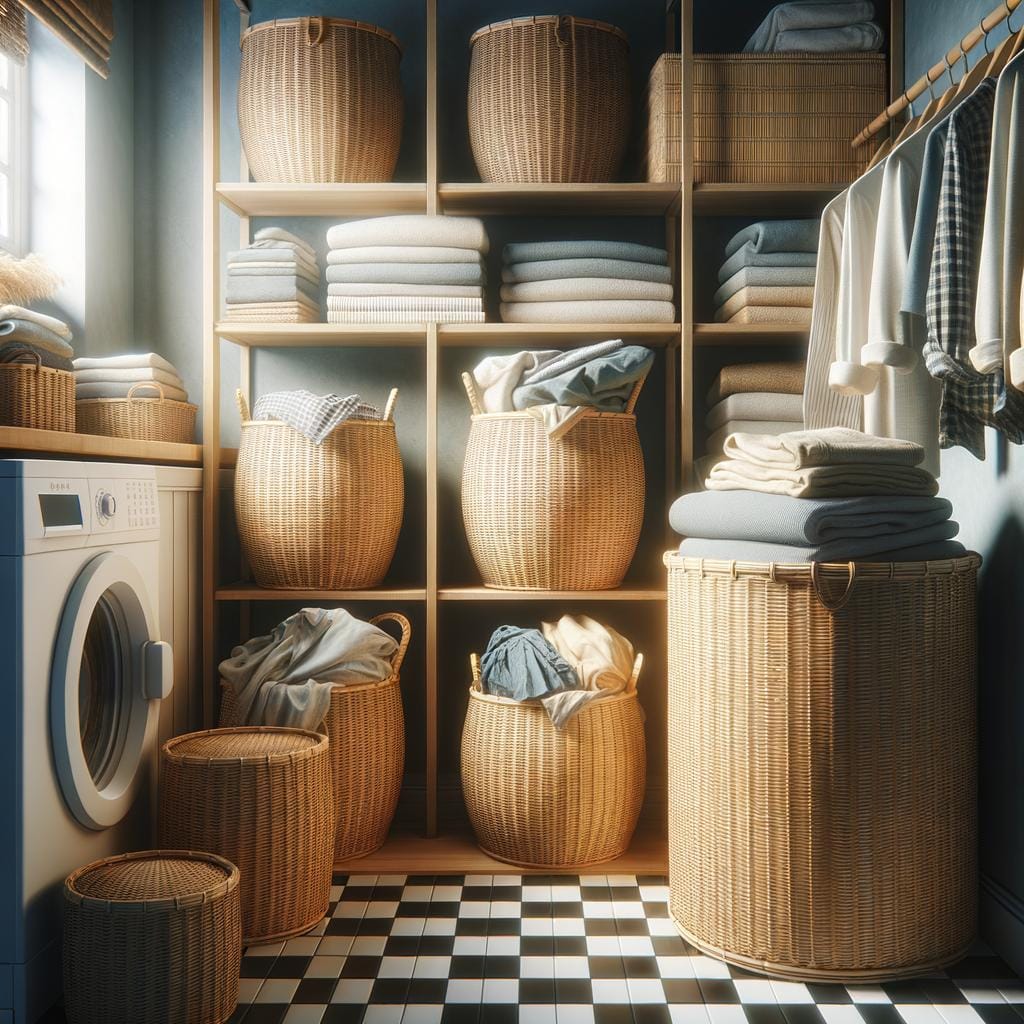Utility sink uses go beyond just washing dirty hands or soaking laundry. Utility sinks are versatile fixtures that can serve various purposes in both residential and commercial settings. From cleaning tools and gardening supplies to bathing pets or even washing small children, utility sinks offer practical solutions for a wide range of tasks.
In this article, we will explore the myriad uses of utility sinks and how they can make your daily chores more manageable. Whether you are looking to upgrade your laundry room, set up a convenient cleaning station in your garage, or simply need an extra sink for outdoor activities, a utility sink can be a valuable addition to your home.
From DIY projects to choosing the right type of utility sink for your specific needs, we will cover everything you need to know about incorporating this versatile fixture into your everyday life. Stay tuned as we delve into the top 10 practical uses for a utility sink in your home and discover creative ways to maximize its functionality in different areas of your living space.
The Top 10 Practical Uses for a Utility Sink in Your Home
Utility sinks are a versatile addition to any home, offering a wide range of practical uses that can make your daily tasks easier and more efficient. From laundry rooms to garages, utility sinks can be utilized in various areas of the house. Here are the top 10 practical uses for a utility sink in your home:
1. Cleaning Supplies: A utility sink is perfect for cleaning and organizing your supplies, whether it’s scrubbing brushes, mop buckets, or sponges. Having a designated space to clean and store these items helps keep your cleaning routine organized.
2. Pet Washing Station: Utility sinks are great for washing pets, especially larger dogs or muddy outdoor pets. The deep basin provides ample space for bathing while containing the mess in one area.
3. Pre-Treating Stains: The spacious basin of a utility sink allows you to pre-treat stains on clothing before tossing them in the washer. This can help ensure that tough stains are properly treated before washing.
4. Potting Plants: Use your utility sink as a convenient potting station for repotting plants or starting seedlings. The sink’s depth makes it easy to fill with soil and water without creating a mess.
5. Outdoor Cleaning: Whether it’s muddy boots, garden tools, or outdoor toys, a utility sink provides an accessible spot for cleaning all your outdoor items before bringing them inside.
6. Handwashing Delicate Items: For delicate clothing items or accessories that require handwashing, a utility sink offers a convenient place to wash and rinse without having to use the kitchen sink.
7. Home Brewing: If you’re into home brewing beer or making homemade soaps and candles, a utility sink is essential for cleaning equipment and materials during the brewing process.
8. Dyeing Fabrics: When working on DIY projects that involve dyeing fabrics or yarns, a utility sink is ideal for rinsing out excess dye without staining other surfaces in your home.
9. Cleaning Paint Brushes: After painting projects, use the deep basin of the utility sink to clean paint brushes thoroughly without worrying about getting paint everywhere.
10. HVAC Maintenance: For those who do their own HVAC maintenance work at home, a utility sink is handy for cleaning condenser coils and other parts that need regular maintenance.
These are just some of the many ways you can incorporate a utility sink into your daily tasks at home to make life easier and more organized.
How to Choose the Right Utility Sink for Your Needs
When it comes to choosing the right utility sink for your needs, there are several factors to consider in order to ensure that you find the perfect fit for your space and requirements. Here are some key considerations to keep in mind when selecting a utility sink:
- Size: Determine how much space you have available for the utility sink and choose a size that fits comfortably within that area. Consider the dimensions of the sink as well as its depth to ensure it can accommodate larger items for cleaning or soaking.
- Material: Utility sinks come in a variety of materials, including stainless steel, acrylic, and even stone. Each material has its own benefits in terms of durability, maintenance, and aesthetics. Consider which material best suits your needs and preferences.
- Functionality: Think about how you will be using the utility sink on a daily basis. Do you need extra features such as a built-in washboard, faucet with pull-out sprayer, or extra-deep basin? Choose a sink that offers the functionality you require for your specific tasks.
In addition to these considerations, it’s also important to think about the style and design of the utility sink. While utility sinks are primarily functional, they can also add aesthetic value to your space. Consider options with different finishes or colors that complement your existing decor.
Ultimately, choosing the right utility sink comes down to finding a balance between practicality, functionality, and aesthetics. By carefully considering these factors and doing thorough research on different options available in the market, you can find a utility sink that meets all your needs and enhances the efficiency of your everyday tasks.
Remember that utility sinks are not just limited to traditional use cases like laundry rooms or garages – they can also be installed in kitchens, outdoor spaces, or even commercial settings depending on your requirements. With proper planning and consideration of all these factors, you can select a utility sink that truly enhances your home environment and serves its purpose efficiently for years to come.
DIY Projects
A utility sink is a versatile addition to any home, offering a wide range of practical uses beyond just washing hands or dishes. One of the primary benefits of having a utility sink is its ability to facilitate various DIY projects that involve cleaning and maintenance tasks. Whether you are an avid gardener, a pet owner, or simply someone who enjoys tackling home improvement projects, a utility sink can be an invaluable tool in keeping your space organized and functional.
Here are some DIY projects that showcase the utility sink uses for cleaning and maintenance tasks:
- Cleaning gardening tools: After a day of tending to your garden, your tools can become covered in dirt and debris. A utility sink makes it easy to quickly rinse off shovels, shears, and other gardening equipment before storing them away.
- Bathing pets: If you have furry friends at home, a utility sink can serve as a convenient bathing station. With its deep basin and easy access to water, washing your pet becomes a hassle-free task.
- Cleaning paintbrushes: Whether you are an artist or tackling a painting project around the house, cleaning paintbrushes can be messy. With a utility sink, you can easily rinse out paint residue and keep your brushes in top condition.
In addition to these specific projects, a utility sink can also be used for general cleaning and maintenance tasks around the house. From washing muddy shoes to scrubbing down dirty outdoor furniture, having a dedicated space for these activities can streamline your chores and help maintain the cleanliness of your home. By incorporating a utility sink into your DIY routine, you can make these tasks more manageable and efficient.
Utility Sink vs Regular Sink
When it comes to choosing between a utility sink and a regular sink for your home, there are some key differences that can help you make an informed decision based on your specific needs. One of the main distinctions between the two types of sinks is their intended use.
A utility sink is typically larger and deeper than a regular sink, making it ideal for tasks that require more space and water volume, such as soaking or handwashing large items. On the other hand, a regular sink is usually smaller and shallower, which is perfect for everyday tasks like washing dishes or hands.
Another important difference between utility sinks and regular sinks is their durability and construction. Utility sinks are often made of heavy-duty materials like stainless steel or acrylic, designed to withstand heavy use and resist scratches and stains.
This makes them perfect for high-traffic areas like laundry rooms, garages, or workshops where they may be subjected to more wear and tear. In contrast, regular sinks are typically made of lighter materials like porcelain or ceramic, which may not hold up as well to constant use and abuse.
In terms of benefits, utility sinks offer a range of additional features that make them versatile fixtures in any home. Many utility sinks come equipped with built-in washboards, sprayers, or extra-deep basins that make cleaning larger items or clothes easier and more efficient. Some models also include integrated storage options or countertop space for added convenience.
Additionally, utility sinks are often designed with easy installation in mind, making them suitable for DIY projects for homeowners looking to upgrade their spaces without professional help. With all these benefits in mind, it’s clear that utility sinks can offer a practical solution for various household tasks beyond what a regular sink can provide.
Creative Ways to Utilize a Utility Sink in Your Laundry Room
Utility sinks are incredibly versatile fixtures that can be a valuable addition to any laundry room. Besides their primary function of washing and soaking items, utility sinks offer a wide range of creative uses that can make your laundry tasks easier and more efficient. One of the key utility sink uses in the laundry room is as a pet bathing station.
For pet owners, having a dedicated space for washing furry friends can help contain messes and keep your home clean. By using a utility sink with a handheld sprayer or faucet extension, you can easily bathe your pets without the hassle of cleaning up fur and water splashes throughout the house.
Another innovative way to utilize a utility sink in your laundry room is as a craft or DIY project station. Whether you enjoy crafting, gardening, or working on small home improvement projects, having a designated area with a durable sink can be incredibly convenient.
You can use the utility sink to wash off dirty tools, rinse paintbrushes, or clean up after messy projects without worrying about damaging your kitchen or bathroom sinks. Additionally, having easy access to water in your laundry room can inspire creativity and encourage you to take on new projects knowing that cleanup will be quick and straightforward.
In addition to its practical uses, a utility sink in the laundry room can also serve as a multi-functional workspace for various household tasks. From handwashing delicate clothing items to pre-treating stains before tossing them in the washer, the deep basin of a utility sink provides ample space for tackling different chores efficiently.
With its sturdy construction and convenient features like built-in scrub boards or drying racks, a well-chosen utility sink can enhance the functionality of your laundry room and streamline your daily routines.
| Utility Sink Uses | Examples |
|---|---|
| Pet Bathing Station | Washing dogs or cats comfortably in an enclosed area. |
| Craft/DIY Project Station | Rinsing paintbrushes and tools without worrying about making a mess. |
| Multi-functional Workspace | Handwashing delicate clothing items or pre-treating stains easily. |
Outdoor Use
When it comes to outdoor spaces like gardens and garages, having a utility sink can prove to be extremely practical and convenient. The functionality of a utility sink extends beyond the confines of your home’s four walls, making it an essential addition to any outdoor space. Whether you are working on your garden, cleaning out your garage, or engaging in various outdoor activities, a utility sink can make your life easier in many ways.
Benefits of Having a Utility Sink Outdoors
One of the main advantages of having a utility sink in your garden or garage is the convenience it offers for various tasks. From washing off dirt and debris from gardening tools to cleaning muddy shoes after working outside, a utility sink allows you to efficiently complete these tasks without tracking dirt into your home.
Additionally, having access to running water outdoors can help in watering plants, mixing soil for planting, and other garden-related activities without the need to constantly go back and forth inside.
Practical Uses of an Outdoor Utility Sink
The versatility of a utility sink shines even brighter when placed outdoors. For garden enthusiasts, a utility sink provides a dedicated space for potting plants, washing freshly picked vegetables, rinsing off gardening gloves, and even filling watering cans. In the garage, having a utility sink makes cleaning up after DIY projects or automotive work much easier.
You can wash paint brushes, clean greasy tools, or even give pets a quick bath before they enter your home. The possibilities are endless when it comes to utilizing an outdoor utility sink for the maintenance and upkeep of your outdoor spaces.
Overall, incorporating a utility sink into your garden or garage area can significantly enhance both the functionality and cleanliness of these spaces. With its numerous benefits and practical uses for various tasks, it’s clear that every garden and garage can benefit from the addition of this versatile fixture.
Whether you’re an avid gardener or someone who enjoys working on projects outdoors, investing in a quality outdoor utility sink is sure to make your tasks easier and more efficient in the long run.
Installing and Plumbing a Utility Sink
Gather the Necessary Tools and Materials
Before beginning the installation process, make sure you have all the tools and materials required. This typically includes a utility sink kit (which includes the sink itself, faucet, and drain assembly), adjustable wrench, pipe wrench, screwdriver, hacksaw, tubing cutter, plumber’s putty or silicone caulk, tape measure, and safety gear such as gloves and goggles.
Locate the Ideal Placement
Next, determine the best location for your utility sink. Ideally, it should be close to existing plumbing lines to minimize the need for additional piping. Consider factors such as access to hot and cold water lines, drainage possibilities, and proximity to electrical outlets if you plan on installing a pump or garbage disposal.
Plumbing the Sink
Once you have selected a location for your utility sink, it’s time to start plumbing. Start by shutting off the water supply to avoid any leaks or accidents. Connect the faucet to the sink according to the manufacturer’s instructions. Then, install the drain assembly with proper sealing using plumber’s putty or silicone caulk. Finally, connect the water supply lines to ensure proper flow of hot and cold water to your sink.
By following these steps carefully and ensuring all connections are secure, you can successfully install and plumb a utility sink in your home. With this valuable addition, you can enjoy all the practical uses of a utility sink while adding convenience to your daily tasks.
Maintenance Tips for Keeping Your Utility Sink in Top Condition
Utility sinks are incredibly versatile fixtures that can be used for a variety of tasks, from cleaning tools and gardening supplies to bathing pets and washing delicate clothing items. With such diverse utility sink uses, it’s essential to keep your utility sink in top condition to ensure its longevity and efficiency. Regular maintenance is key to preventing clogs, leaks, and other issues that may arise over time.
To maintain your utility sink effectively, start by regularly cleaning the basin with a mild detergent or cleaner to remove dirt, grime, and soap scum buildup. Be sure to also clean the faucet, handles, and any other hardware attached to the sink. Inspect the drain for any debris that may be causing slow drainage and remove it as needed. Additionally, check for any signs of leakage around the pipes or fittings and address them promptly to prevent water damage.
Another important maintenance tip for keeping your utility sink in top condition is to avoid using harsh chemicals or abrasive cleaners that can damage the sink’s surface. Instead, opt for gentle cleaning products that are safe for use on a variety of materials. In addition, consider installing a drain strainer or filter to catch debris and prevent it from entering the plumbing system. This simple accessory can help prevent clogs and prolong the life of your utility sink.
| Maintenance Tip | Importance |
|---|---|
| Regularly clean the basin and hardware | Prevents dirt buildup and maintains efficiency |
| Inspect drains for debris | Prevents clogs and ensures proper drainage |
| Avoid using harsh chemicals | Prevents damage to the sink’s surface |
By following these maintenance tips and incorporating them into your regular routine, you can ensure that your utility sink remains in top condition for years to come. Taking care of this essential fixture will not only prolong its lifespan but also ensure that it continues to meet all your needs effectively. Remember that proper maintenance is key to getting the most out of your utility sink and maximizing its utility in everyday tasks.
Conclusion
In conclusion, utility sinks are a versatile and practical addition to any home, offering a wide range of uses that can simplify daily tasks and enhance functionality. From laundry rooms to garages, gardens, and even DIY projects, utility sinks provide convenience and efficiency in various aspects of household maintenance. The keyword “utility sink uses” encompasses a multitude of possibilities, making it an essential fixture in everyday life.
Whether you are looking to tackle tough cleaning jobs, engage in gardening activities, or handle basic plumbing tasks, a utility sink is the perfect solution. Its durability and deep basin make it ideal for washing large objects like tools, pet supplies, or even muddy boots. The versatility of utility sinks extends beyond traditional chores, allowing for creative projects and innovative ways to maximize space within your home.
By choosing the right utility sink based on your specific needs and preferences, you can enjoy the benefits of easy installation and low maintenance. With proper care and regular upkeep, your utility sink can remain in top condition for years to come. As you explore the endless possibilities of utility sink uses in everyday life, you’ll discover new ways to streamline your routine and enhance the functionality of your living space.
Frequently Asked Questions
Is a Utility Sink Necessary?
A utility sink can be necessary depending on your needs and lifestyle. It provides a convenient space for tasks that may be too messy or large for a standard kitchen sink, such as soaking clothes, cleaning tools, or bathing pets.
What Is the Difference Between a Laundry Sink and a Utility Sink?
The main difference between a laundry sink and a utility sink lies in their size and functionality. A laundry sink is typically smaller and designed specifically for washing delicates or handwashing clothes. On the other hand, a utility sink is larger and more durable, suitable for heavier tasks like cleaning gardening tools or muddy boots.
What Is the Purpose of the Sink in the Laundry Room?
The purpose of the sink in the laundry room is primarily to facilitate various laundry-related tasks efficiently. It serves as a designated area for pre-treating stains, handwashing delicate items, rinsing detergent from clothes, or even filling buckets with water for mopping floors.
Ultimately, it enhances the overall functionality of the laundry room by providing a dedicated space for cleanliness and organization.

Hello, I’m April Denton, your go-to expert for all things home decluttering and organization. With over a decade of experience helping individuals transform their living spaces into serene, clutter-free sanctuaries, I am passionate about the life-changing benefits of decluttering. My journey into the world of organization began out of necessity, juggling a busy career and a bustling household. I quickly realized that a well-organized home was the key to a more balanced, stress-free life.





